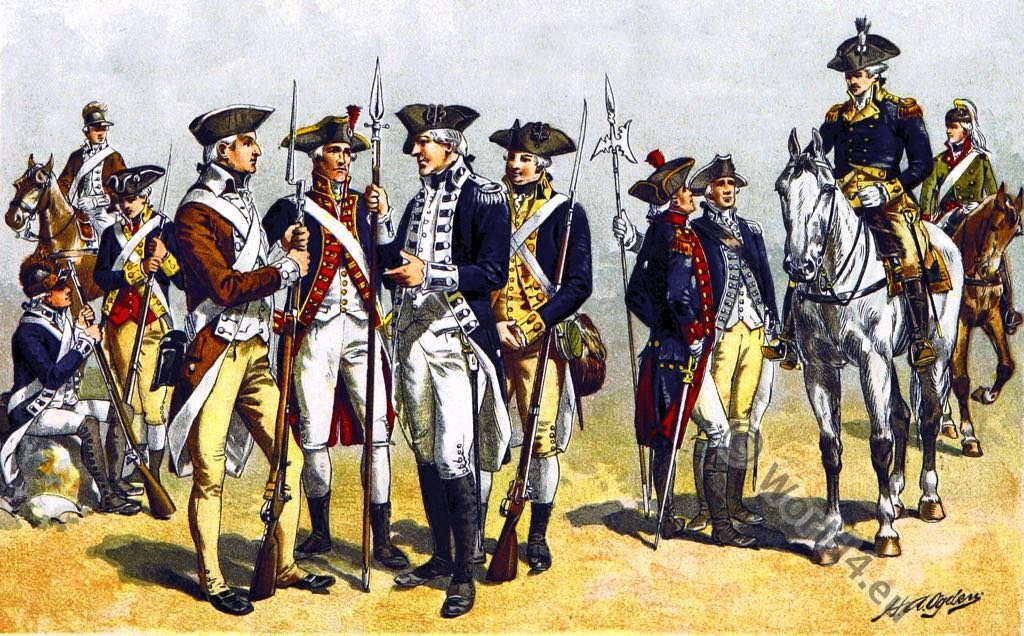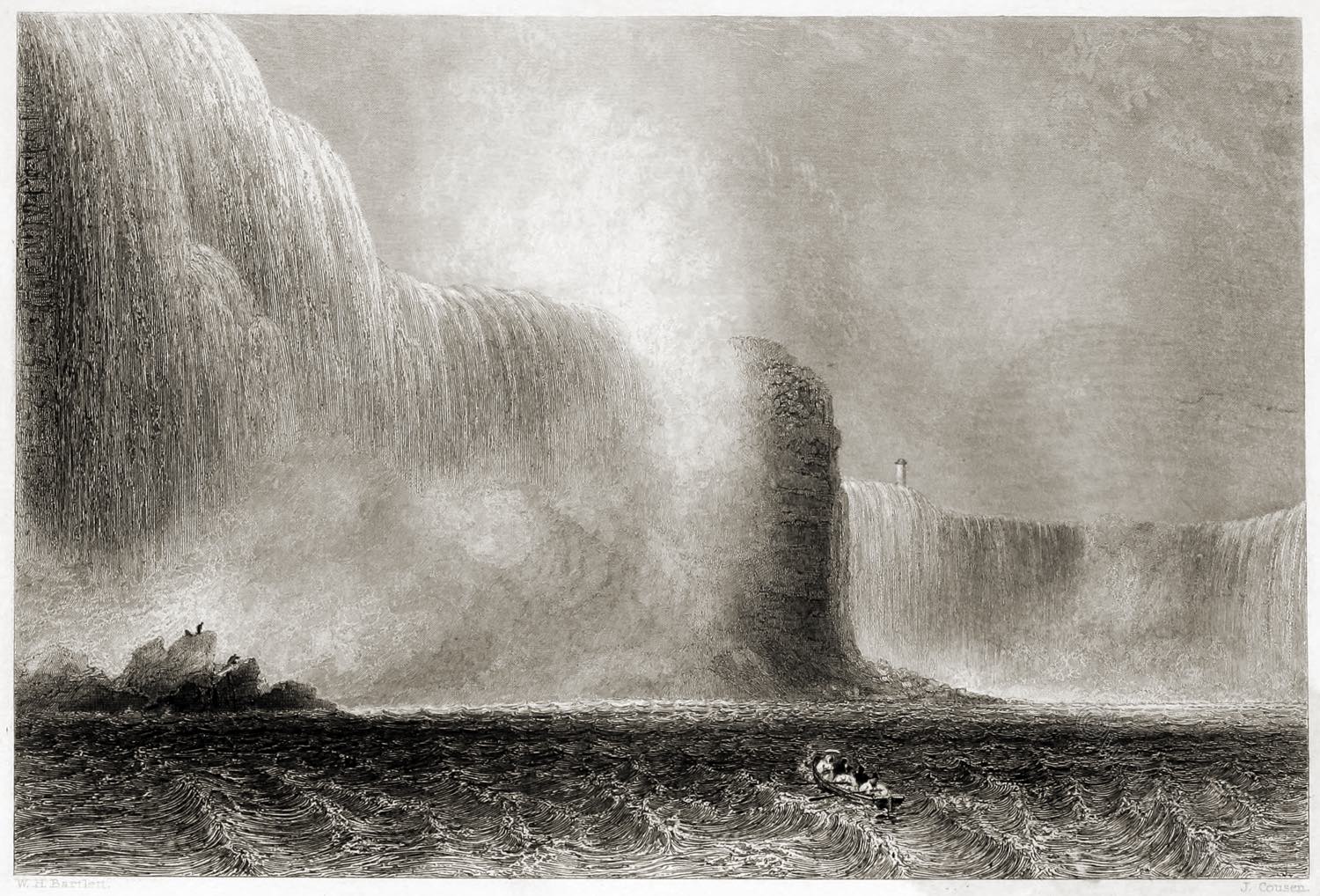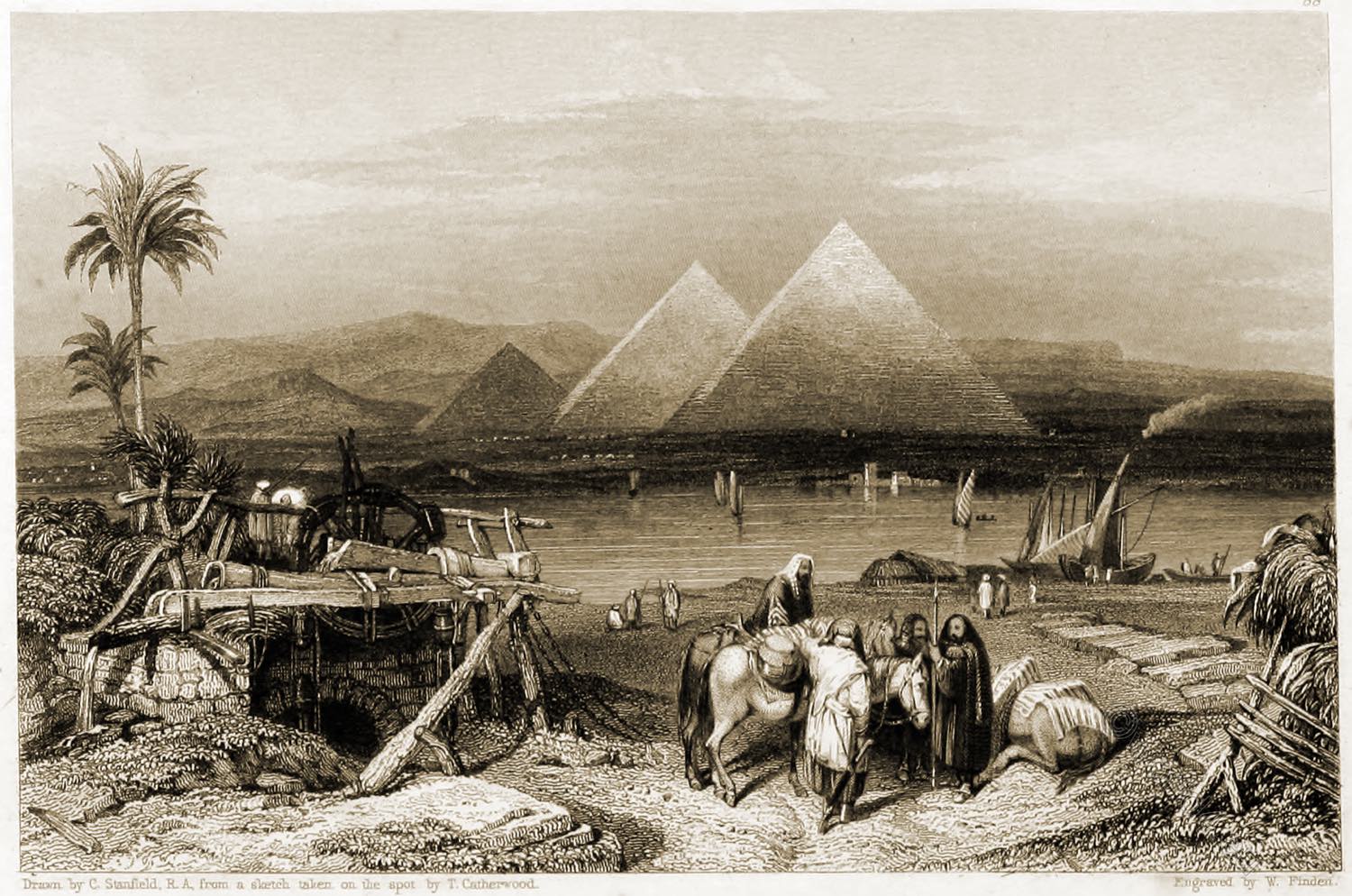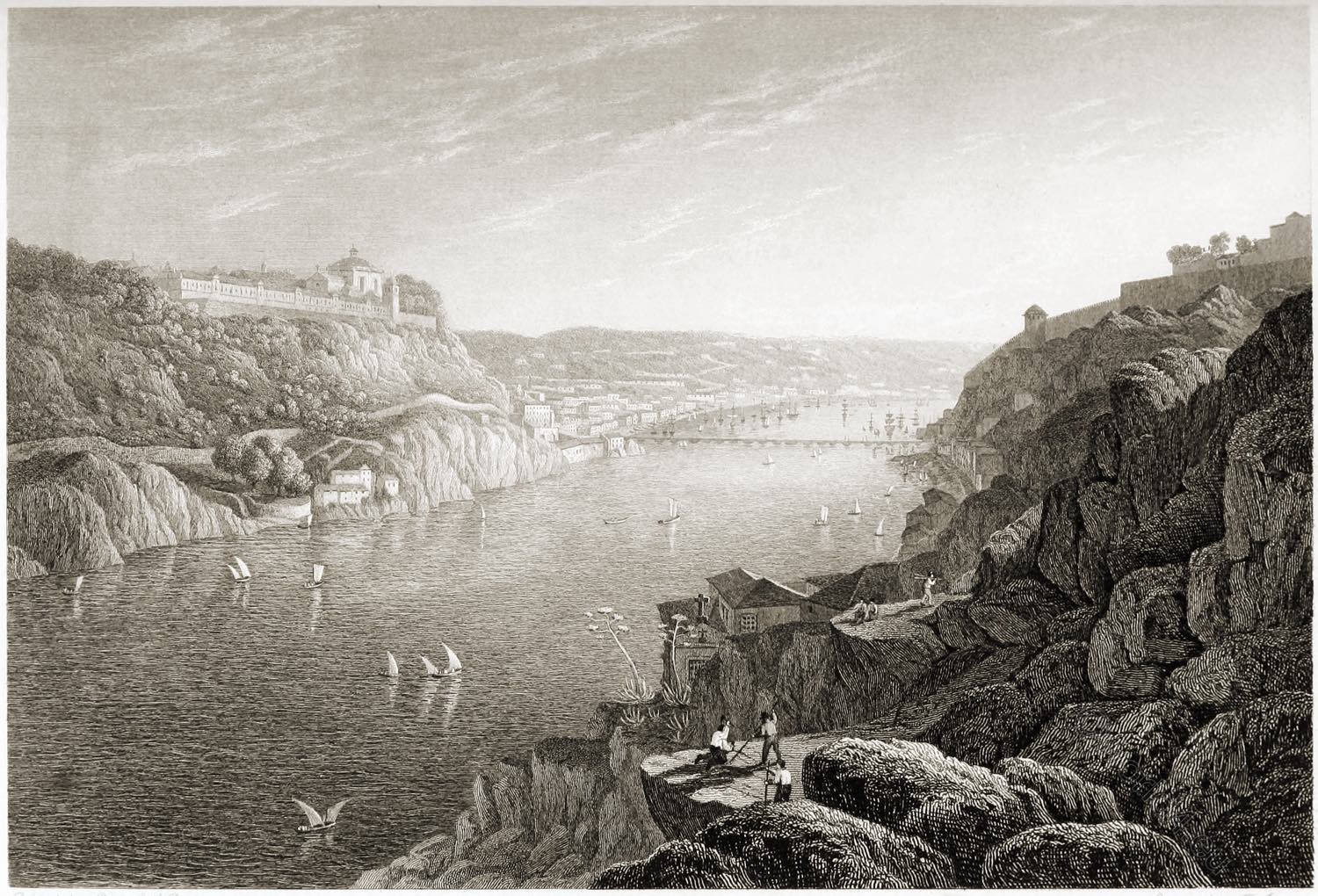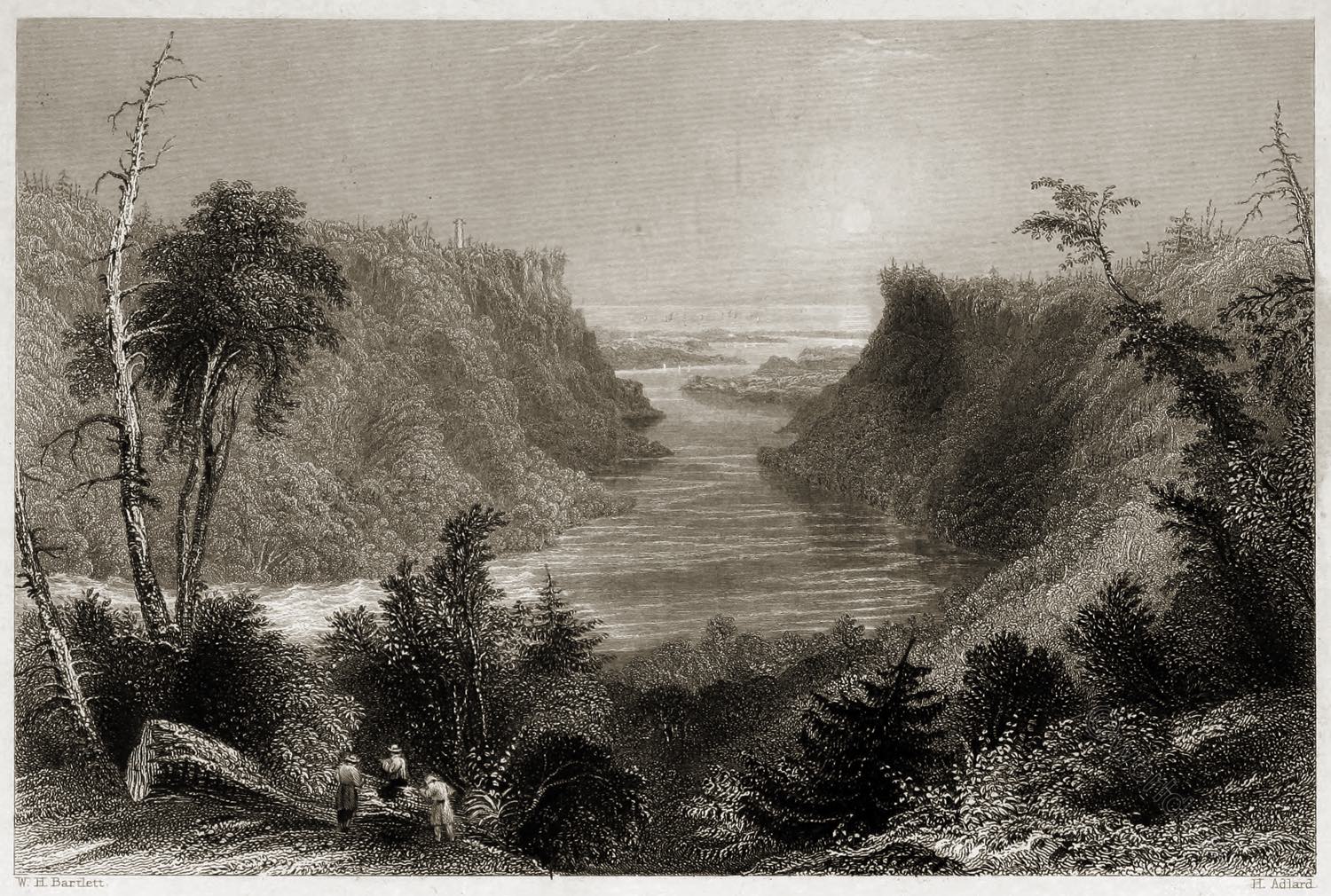
OUTLET OF NIAGARA RIVER.
This view is taken from the American side, and presents the debouchure of the waters of Niagara into Lake Ontario, from a point of great advantage. The vastness of the lake beyond, the tremendous agony which the still foaming waters have just escaped at Niagara, and the remoter journey of three thousand miles by which they have sought the sea from their fountains in the west, form a back-ground of imagination to this view, which, realized on the spot, give it a very thrilling interest. It is in itself, however, a landscape of unusually bold character; and the lofty and curving banks of the river are in keeping with its powerful flow, and the immense volume it pours into the lake.
Fort Niagara, on the opposite side, was erected by the French so late as 1751, and was looked upon by them as the key to all these inland seas. They had possession of it about eight years. In the beginning of July, 1759, General Prideaux, with his troops, reinforced by the Indian auxiliaries under Sir William Johnson, advanced to Niagara without the least hinderance—the enemy here not being in sufficient force to throw any impediments in the way.
About the middle of July he commenced the siege, which he carried on with great vigour till the twentieth, when he was killed in the trenches. Sir William Johnson, who succeeded him, pressed the siege with great vigour. The enemy, alarmed with the apprehension of losing a place of such importance, resolved to make a last effort for its relief. For this purpose, they assembled about twelve hundred men, drawn from Venango, Presque Isle, and Detroit; and these, with some Indian auxiliaries, were detached, under the command of M. d’Aubry, on an attempt to reinforce the garrison. Sir William Johnson having received intelligence of their design, made a disposition to intercept them in their march. He accordingly detached a considerable body of troops for this service, who, falling in with the enemy very near the lines of the besiegers, a battle was fought, which resulted in the entire defeat of the French, with the capture of their commander, and most of his officers.
This battle happened the twenty-fourth of July, and was fought in sight of the French garrison at Niagara. Sir William Johnson immediately after sent Major Harvey to the commandant of the fort, with an order, exhorting him to surrender, which being complied with, the garrison, consisting of about six hundred men, surrendered prisoners of war.”
The following letter from Sir William Johnson, reporting his victory, is preserved in the Historical Journal kept by Captain Knox, and printed at the time: “I have the honour to acquaint you, by Lieutenant Moncrief, that Niagara surrendered to his Majesty’s arms, on the twenty-fifth instant. A detachment of twelve hundred men, with a number of Indians, under the command of Messieurs Aubry and Signery, collected from Detroit, Venango, and Presqu’Isle, made an attempt to reinforce the garrison, the twenty-fourth in the morning; but as I had intelligence of them, I made a disposition to intercept them. The evening before, I ordered the light infantry and piquets to take post on the road upon our left, leading from Niagara Falls to the fort; in the morning, I reinforced these with two companies of grenadiers, and part of the forty-sixth regiment.
The action began about half an hour after nine; but they were so well received by the troops in front, and the Indians on their flank, that, in an hour’s time, the whole was completely ruined, and all their officers made prisoners, among whom are M. d’Aubry, de Signery, Marin, Repentini, to the number of seventeen. I cannot ascertain the number killed, they are so dispersed among the woods; but their loss is great. As this happened under the eyes of the garrison, I thought proper to send my last summons to the commanding officer, for his surrendering, which he listened to. I inclose you the capitulation: M. Moncrief will inform you of the state of our ammunition and provisions; I hope care will be. taken to forward an immediate supply of both to Oswego. As the troops that were defeated yesterday were drawn from those posts which lie in General Stanwig’s route, I am in hopes it will be of the utmost consequence to the success of his expedition.
The public stores of the garrison, that can be saved from the Indians, I shall order the Assistant Quarter-Master General, and the Clerk of the stores, to take an account of, as soon as possible. As all my attention at present is taken up with the Indians, that the capitulation I have agreed to may be observed, your Excellency will excuse my not being more particular. Permit me to assure you, in the whole progress of the siege, which was severe and painful, the officers and men behaved with the utmost cheerfulness and bravery. I have only to regret the loss of General Prideaux and Colonel Johnson; I endeavored to pursue the late General’s vigorous measures, the good effects of which he deserved to enjoy.”
Source: American Scenery; or, Land, Lake, and River Illustrations of Transatlantic Nature. From Drawings by W. H. Bartlett. Engraved by R. Wallis, J. Cousen, Willmore, Brandard, Adlard, Richardson, &c. The Literary Department By N. P. Willis, Esq. London: George Virtue 26, Ivy Lane. 1840.
Continuing
Discover more from World4 Costume Culture History
Subscribe to get the latest posts sent to your email.


